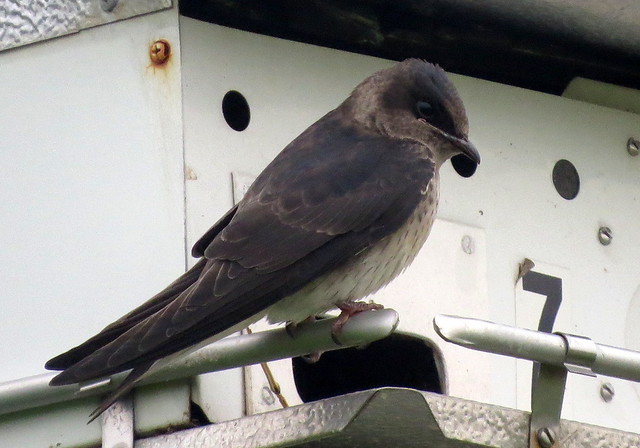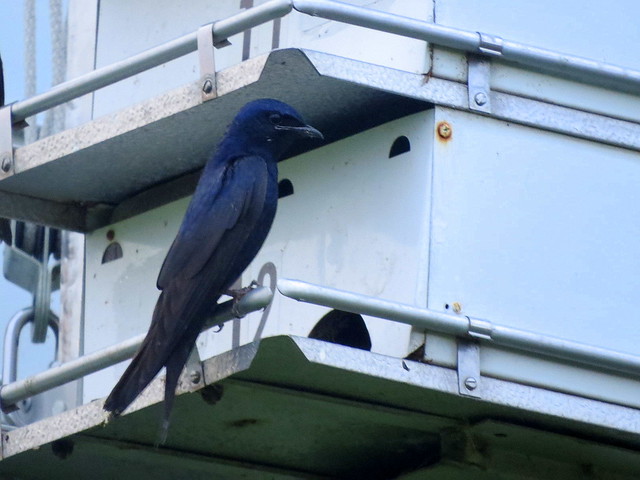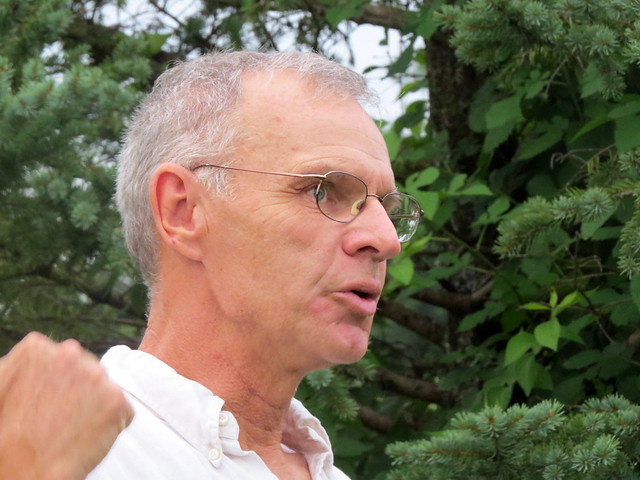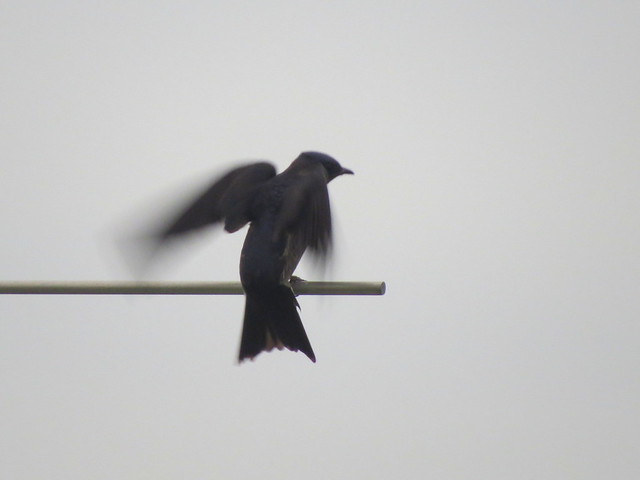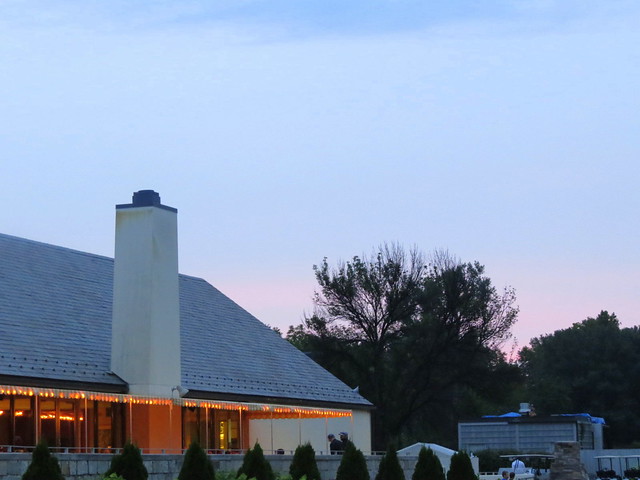Purple Martin Event, Forest Park, 090715
July 11, 2015
Forest Park Forever had organized another session with
where he would tell us about the
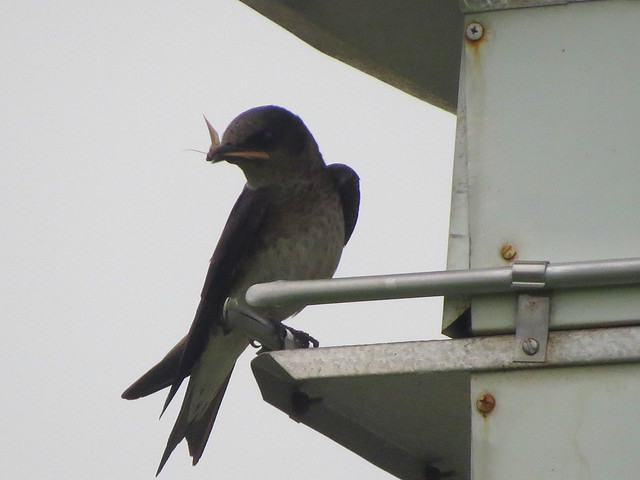 unlike their cousins the Barn Swallows, which swoop over the grass and fields, catching insects just above the ground.
unlike their cousins the Barn Swallows, which swoop over the grass and fields, catching insects just above the ground.
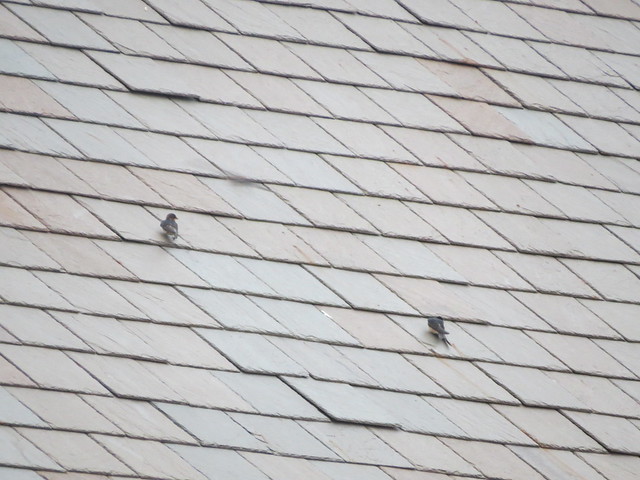
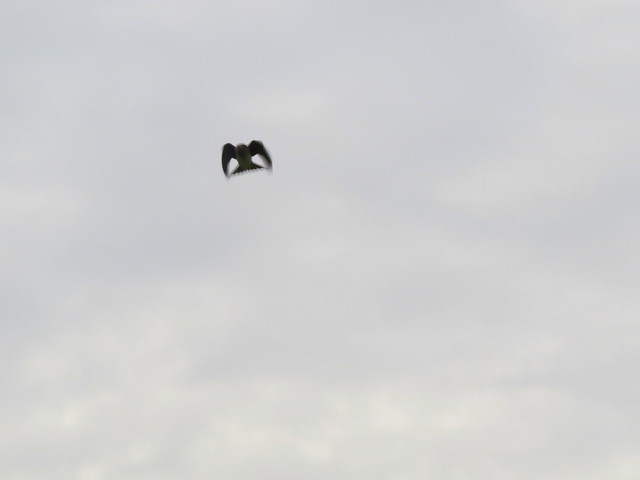 I walked over a little early, but John was already at the nesting boxes.
I walked over a little early, but John was already at the nesting boxes.
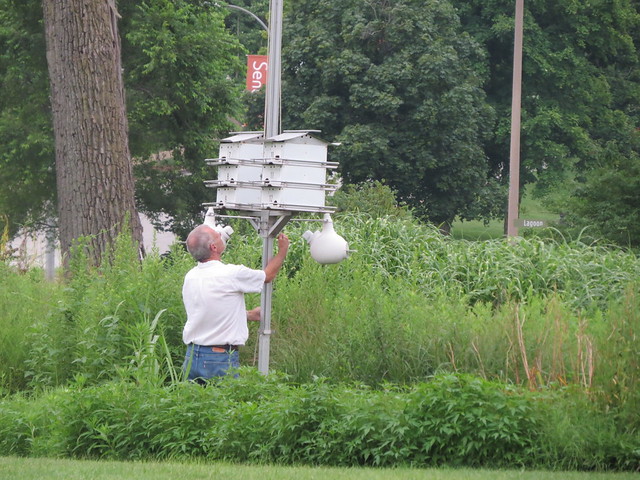 He determined that I was a birdwtcher and not a random tourist, and decided that he'd let me watch what he was doing...checking both the "house"
He determined that I was a birdwtcher and not a random tourist, and decided that he'd let me watch what he was doing...checking both the "house"
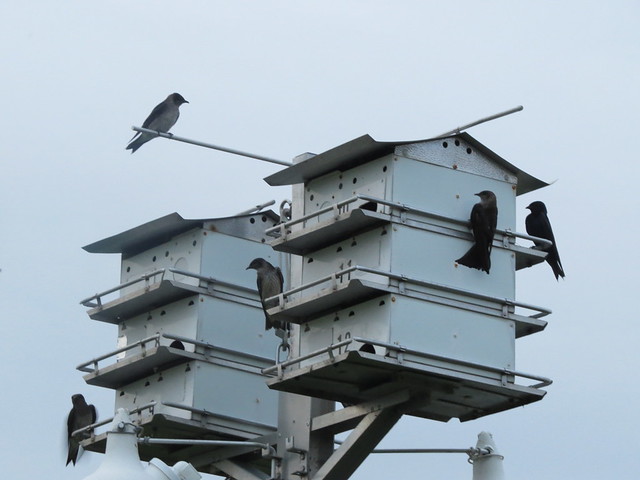 and "gourd"
and "gourd"
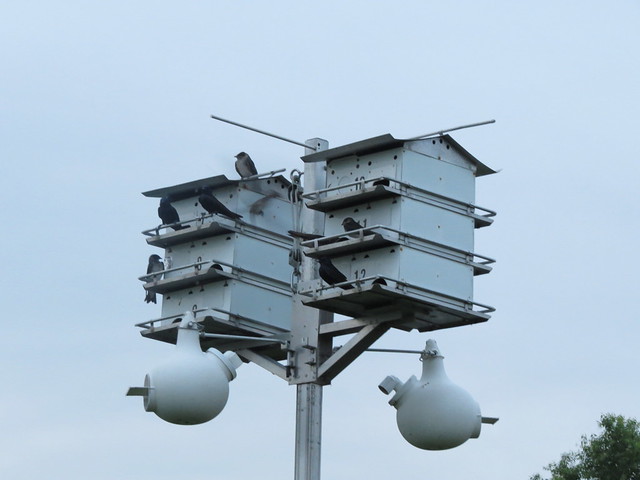 type of nests, following a meticulous list.
type of nests, following a meticulous list.
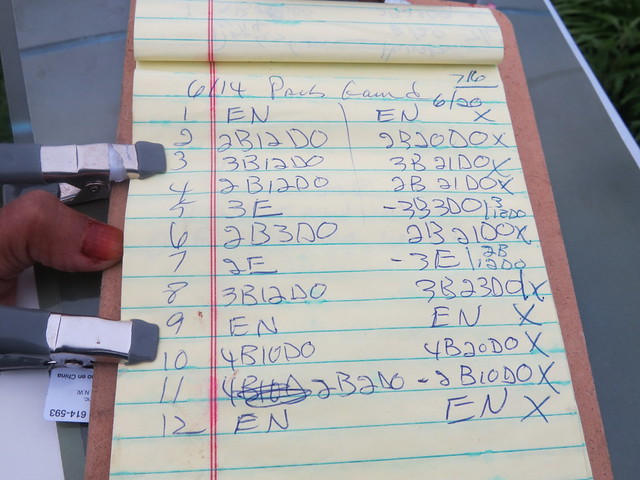 He showed me this baby bird.
He showed me this baby bird.
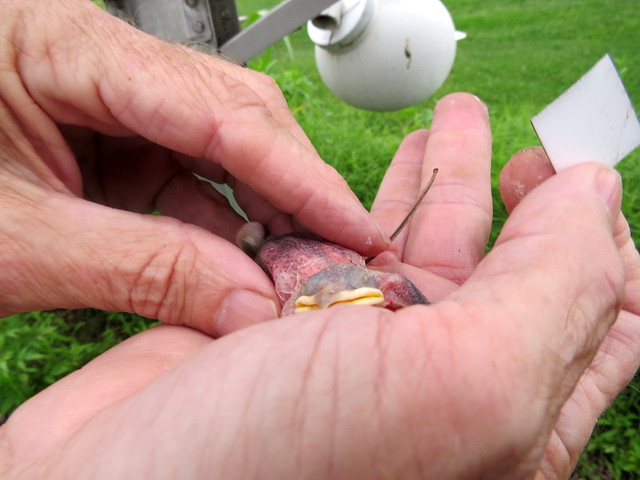 He said that out of the 67 "homes" that have been provided for the Purple Martins in Forest Park, 63 have been occupied, and he's seen as many babies fledge this year as he's ever done in the 10 years (since 2005) that he's been involved in this work.
The nests were earlier in the form of bird "houses", but increasingly, John and his team of volunteers find that the gourd-shape gives better protection to the nestlings because of the deep bowl-depression in the center.
He said that out of the 67 "homes" that have been provided for the Purple Martins in Forest Park, 63 have been occupied, and he's seen as many babies fledge this year as he's ever done in the 10 years (since 2005) that he's been involved in this work.
The nests were earlier in the form of bird "houses", but increasingly, John and his team of volunteers find that the gourd-shape gives better protection to the nestlings because of the deep bowl-depression in the center.
 John has also incorporated a vent in the design of these plastic gourds, as well as a "jar-lid" type of unscrewing lid that he can gain access to the nests with.
John has also incorporated a vent in the design of these plastic gourds, as well as a "jar-lid" type of unscrewing lid that he can gain access to the nests with.
 He says that a set of gourds like this one would cost around $600, but they can last forever, with maybe just the lids needing replacement sometimes.
I was trying to find out how the design of these gourds has evolved, but I think John could not understand my accent. However, I realized that it is he who has been refining the design of these homes. Some of them now have "owl guards" to prevent the Great Horned Owls (sorry,
Mark Glenshaw ,
Charles and Sarah not welcome here....)
Those curved long pieces are what keep owls out.
He says that a set of gourds like this one would cost around $600, but they can last forever, with maybe just the lids needing replacement sometimes.
I was trying to find out how the design of these gourds has evolved, but I think John could not understand my accent. However, I realized that it is he who has been refining the design of these homes. Some of them now have "owl guards" to prevent the Great Horned Owls (sorry,
Mark Glenshaw ,
Charles and Sarah not welcome here....)
Those curved long pieces are what keep owls out.
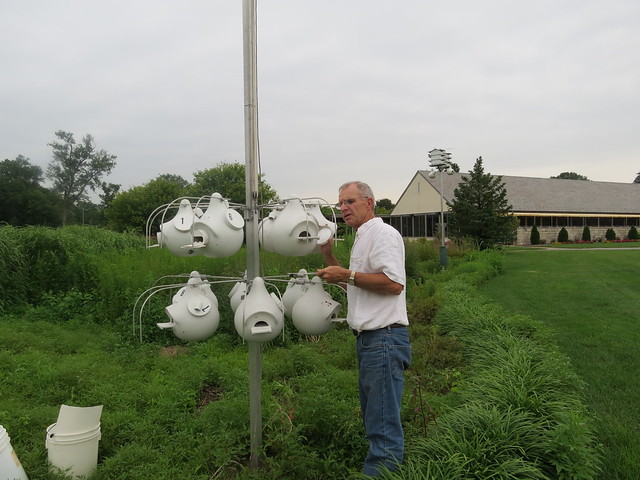 And when there are sites threatened by construction, he works actively to find alternative places where these homes can be erected.
He showed us the fledglings that were sitting on top of a nearby tree.
And when there are sites threatened by construction, he works actively to find alternative places where these homes can be erected.
He showed us the fledglings that were sitting on top of a nearby tree.
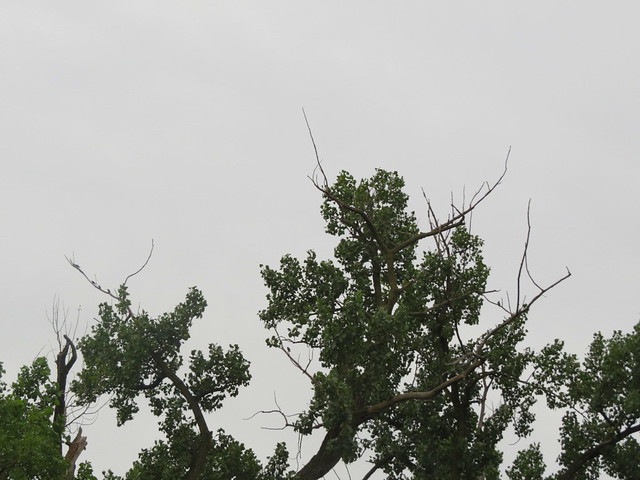
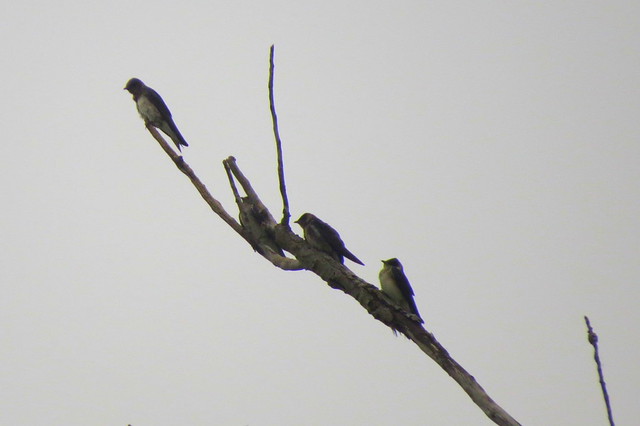 (out of nowhere, this Eastern Kingbird flew in, perched for a while on the martin-homes, and then flew off.
(out of nowhere, this Eastern Kingbird flew in, perched for a while on the martin-homes, and then flew off.
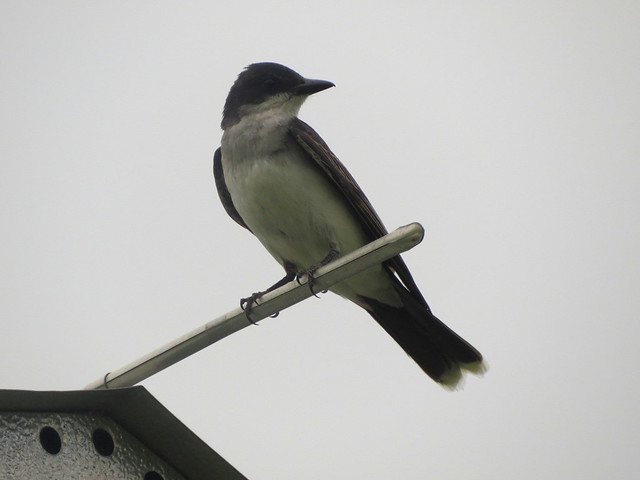 I quickly took a snap!)
He said that they would return to their nests for shelter for a week or two after fledging...I've never heard of this bird-behavior before. He also laughed and mentioned that newly-fledged birds are more heedful of their parents and settle down into the nest quickly at dusk...
I quickly took a snap!)
He said that they would return to their nests for shelter for a week or two after fledging...I've never heard of this bird-behavior before. He also laughed and mentioned that newly-fledged birds are more heedful of their parents and settle down into the nest quickly at dusk...
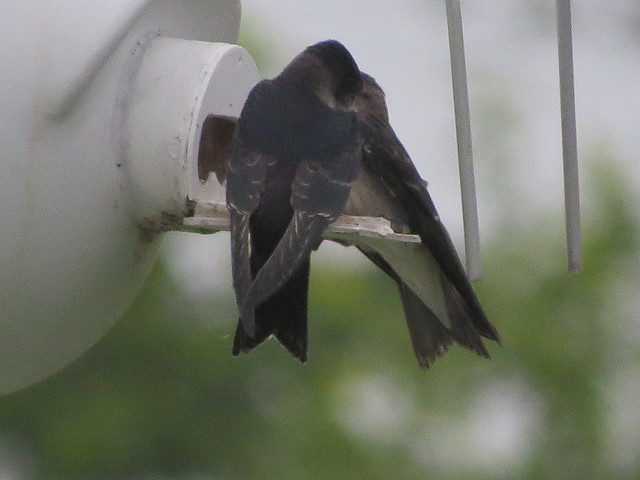 but older fledglings are more rowdy and adventurous, not realizing that they are at risk from predators (raccoons and owls...apparently there are no snakes like the Black Snake,which raid birds' nests, in Forest Park).
but older fledglings are more rowdy and adventurous, not realizing that they are at risk from predators (raccoons and owls...apparently there are no snakes like the Black Snake,which raid birds' nests, in Forest Park).
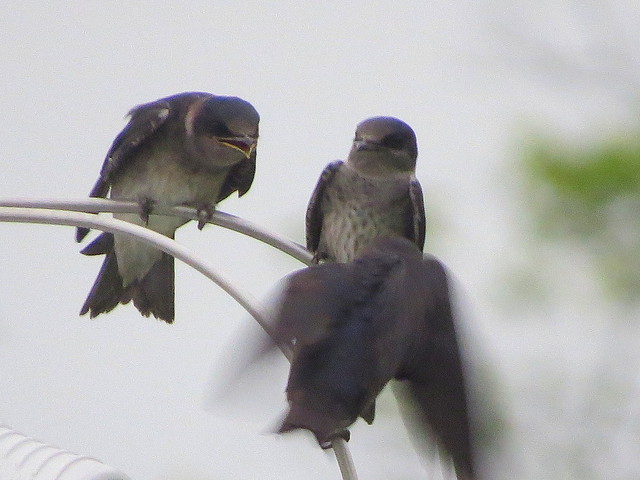 He "changed" a nest, that had got soggy and moldy with the recent rain,
He "changed" a nest, that had got soggy and moldy with the recent rain,
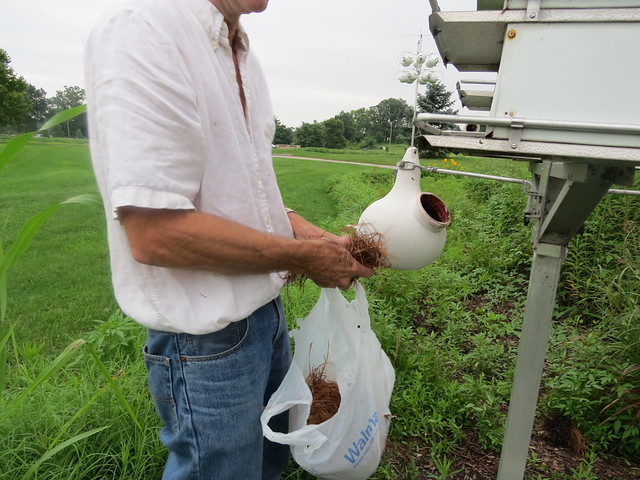 and took out the nestlings while he did this. It was a sight to see him put them in his bucket,
and took out the nestlings while he did this. It was a sight to see him put them in his bucket,
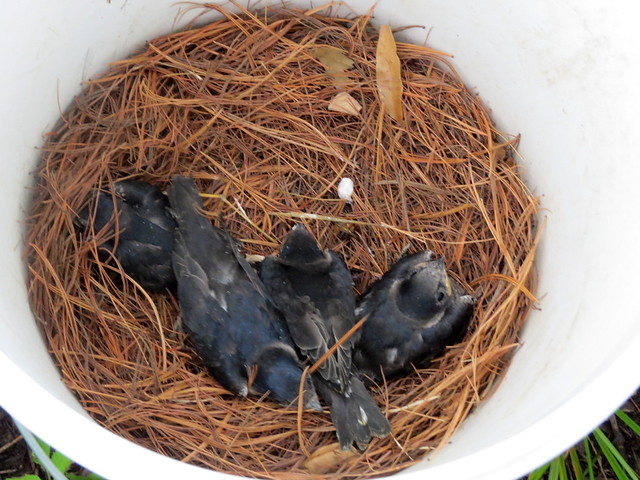
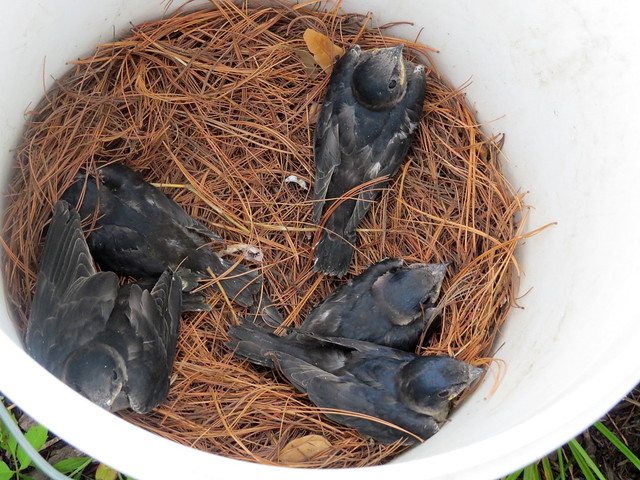 and he lovingly lifted them and put them back once he'd set in a new bed of pine needles for them.
and he lovingly lifted them and put them back once he'd set in a new bed of pine needles for them.
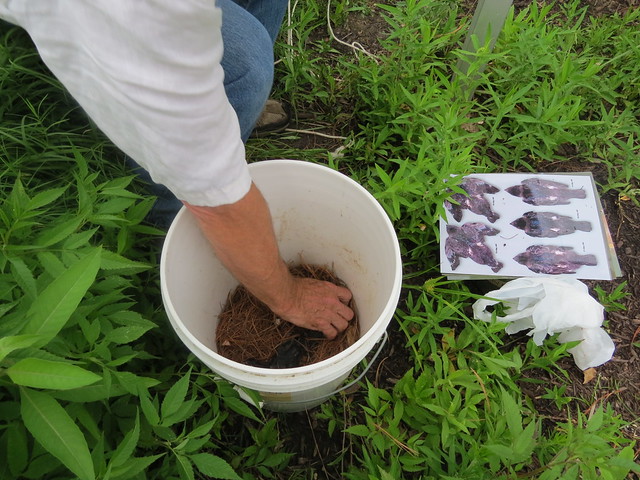 In other nests and gourds, there were nestlings in various stages of growth.
In other nests and gourds, there were nestlings in various stages of growth.
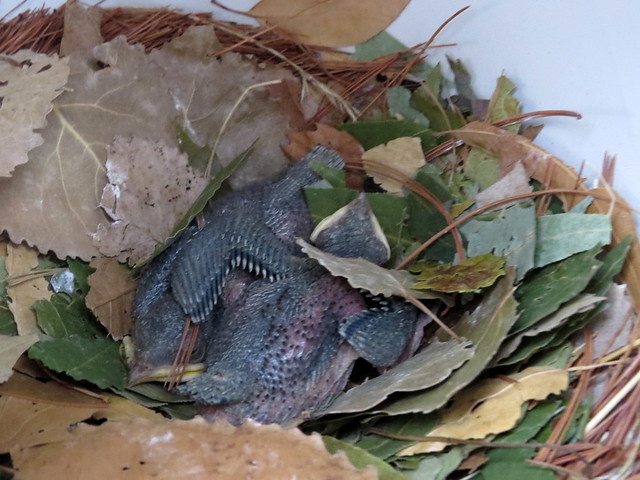
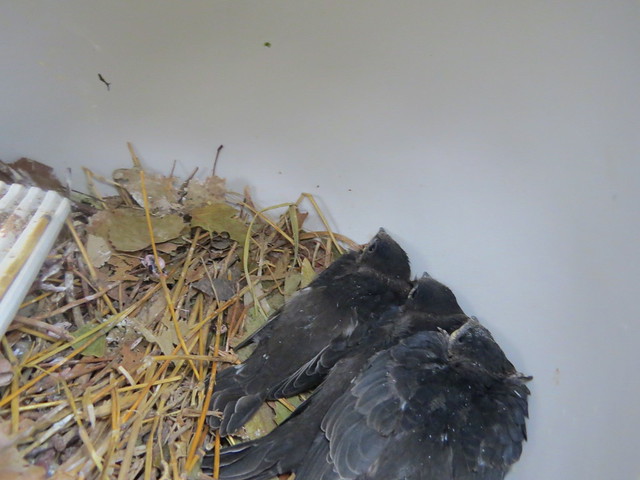
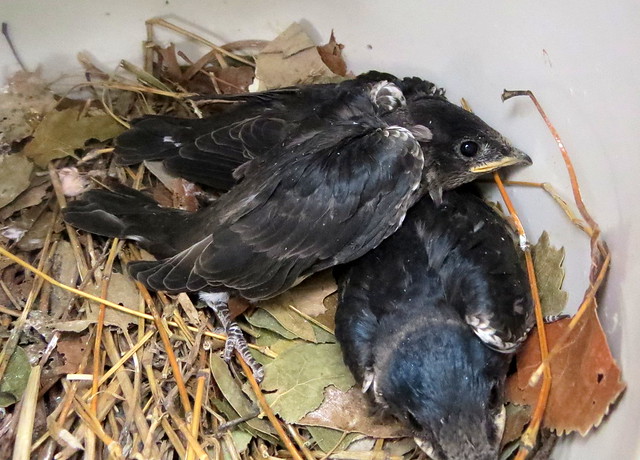 From egg-hatching to fledging
From egg-hatching to fledging
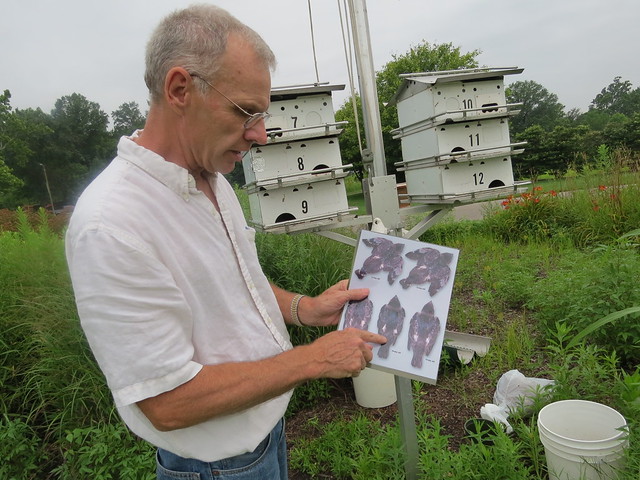 takes about 28 days, so we were there in just the right window of breeding. Wintering in South America, purple martins migrate to North America in spring to breed. Spring and fall migration are both somewhat staggered.Soon, he said, the birds would be on their way south, to the Amazon basin("I think they speak Portugese over there," John quipped) and would return next year.
takes about 28 days, so we were there in just the right window of breeding. Wintering in South America, purple martins migrate to North America in spring to breed. Spring and fall migration are both somewhat staggered.Soon, he said, the birds would be on their way south, to the Amazon basin("I think they speak Portugese over there," John quipped) and would return next year.
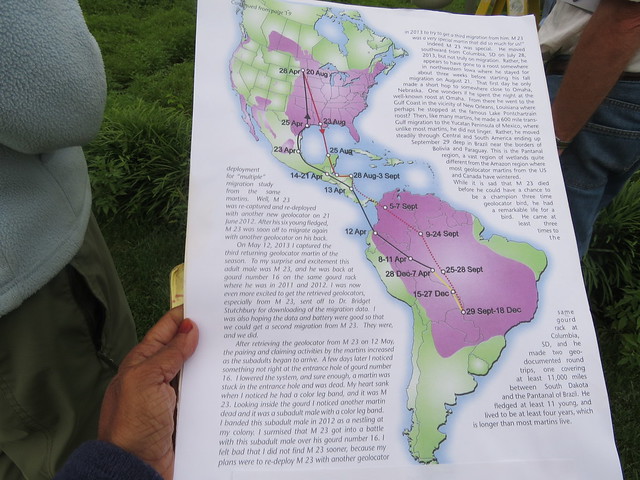 The bird would not mind nesting in the same sites year after year, but volunteers clean some of them out in the interests of cleanliness. Mites can often proliferate and if too numerous on the nestlings' bodies, might cause them to fledge too early.
His passion for these beautiful birds shows every time I meet him; "enchanting" is the word he uses for them. He showed us these excellent portraits of the male
The bird would not mind nesting in the same sites year after year, but volunteers clean some of them out in the interests of cleanliness. Mites can often proliferate and if too numerous on the nestlings' bodies, might cause them to fledge too early.
His passion for these beautiful birds shows every time I meet him; "enchanting" is the word he uses for them. He showed us these excellent portraits of the male
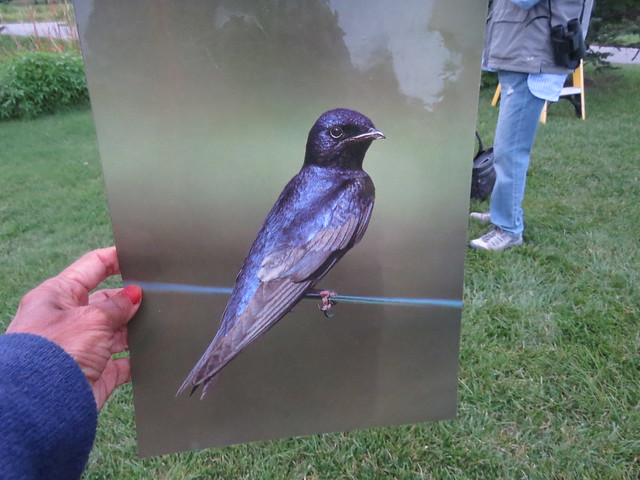 and female
and female
 birds.
birds.
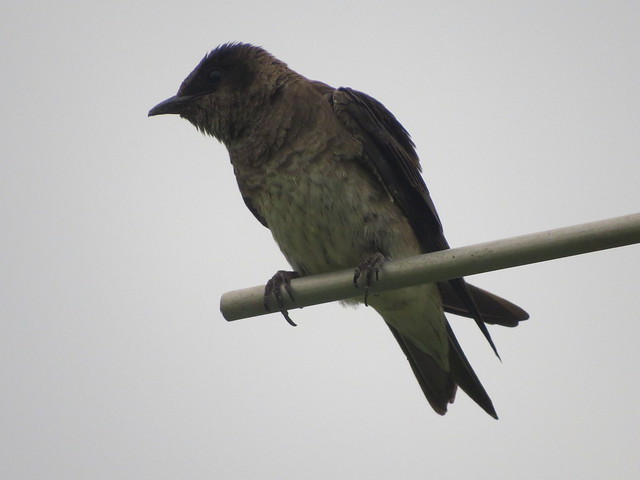 I thought I'd need to be over 6 feet tall to look into the nests, but John later provided a small step-ladder so that we could look at,
I thought I'd need to be over 6 feet tall to look into the nests, but John later provided a small step-ladder so that we could look at,
 and photograph,
and photograph,
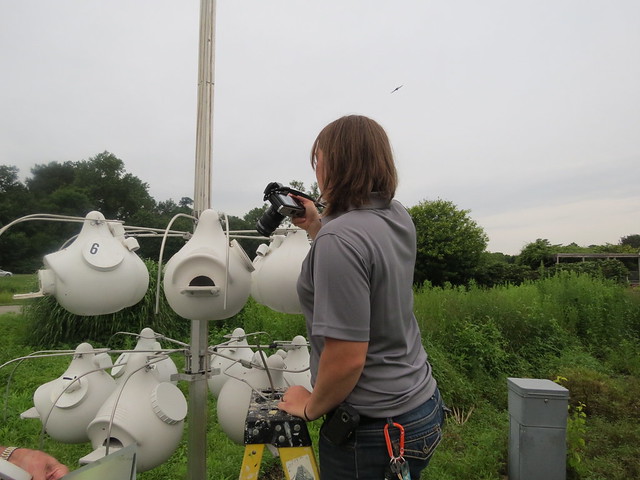 the nestlings. Though the parents flew around, waiting with food in their mouths, they did not seem unduly alarmed, and have probably got used to people like John not causing them harm.
the nestlings. Though the parents flew around, waiting with food in their mouths, they did not seem unduly alarmed, and have probably got used to people like John not causing them harm.
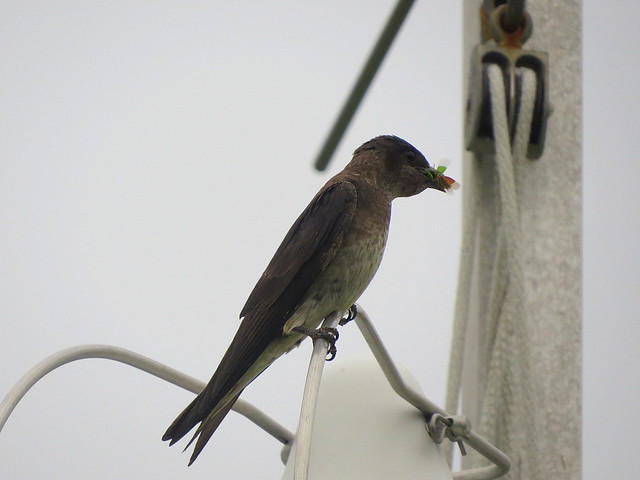 They went in to feed the nestlings and came out with the fecal sacs, and flew off to "dispose" of them elsewhere...Good Housekeeping!
They went in to feed the nestlings and came out with the fecal sacs, and flew off to "dispose" of them elsewhere...Good Housekeeping!
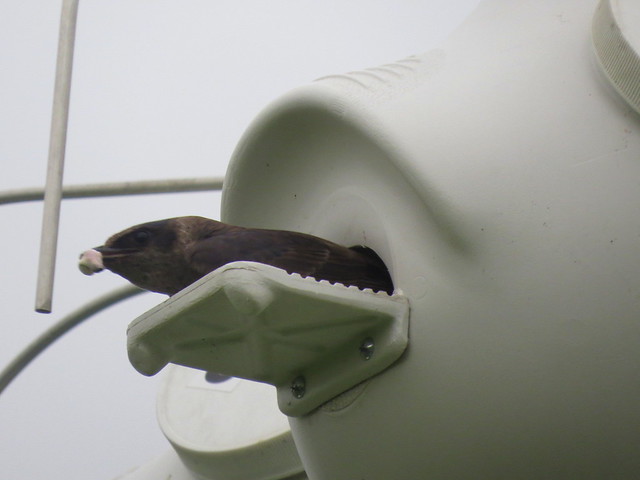 Certainly, a symbiotic relationship where humans provide them shelter and they provide hours of delight in return!
I asked him about the fake Purple Martin I'd seen at the gourds at the Wehr Nature Park in Milwaukee, and he said that some people used decoys, hoping to get the birds to nest in the gourds...however, not always successful, and no one still knew what exactly made the birds decide to use a particular set of "houses" or gourds.
Certainly, a symbiotic relationship where humans provide them shelter and they provide hours of delight in return!
I asked him about the fake Purple Martin I'd seen at the gourds at the Wehr Nature Park in Milwaukee, and he said that some people used decoys, hoping to get the birds to nest in the gourds...however, not always successful, and no one still knew what exactly made the birds decide to use a particular set of "houses" or gourds.
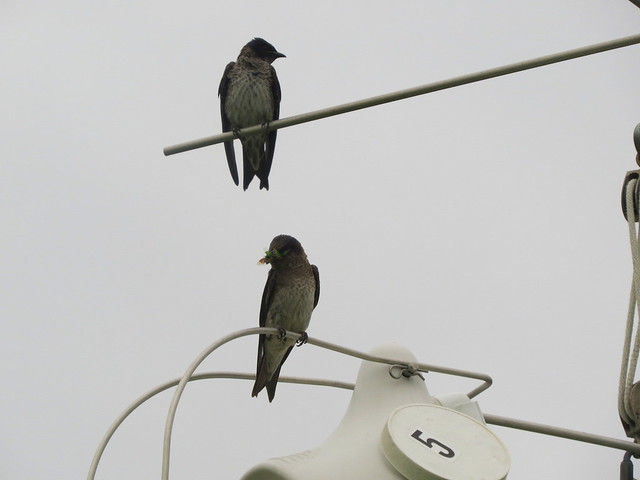 He talked about the various locations of the homes in Forest Park and elsewhere in St.Louis.
After he winched the homes back up in the air, attached the raccoon-guards on the poles, and we moved further away, the martins flew back in large numbers.
He talked about the various locations of the homes in Forest Park and elsewhere in St.Louis.
After he winched the homes back up in the air, attached the raccoon-guards on the poles, and we moved further away, the martins flew back in large numbers.
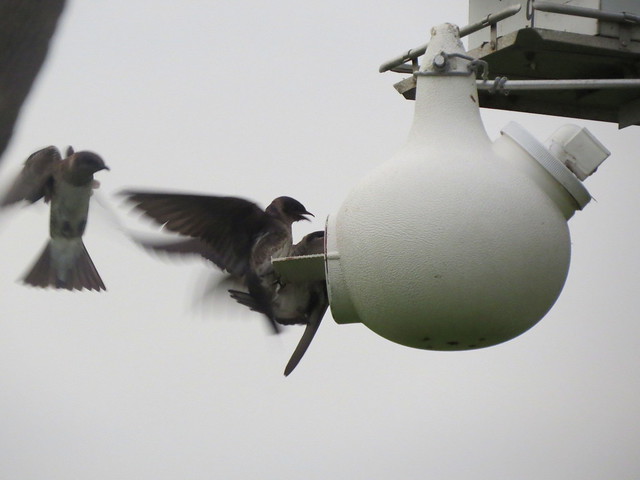 The fledglings had learnt how to fly, but not yet how to land! They quarreled and bickered among each other, just like human children.
As they settled down for the night,
The fledglings had learnt how to fly, but not yet how to land! They quarreled and bickered among each other, just like human children.
As they settled down for the night,
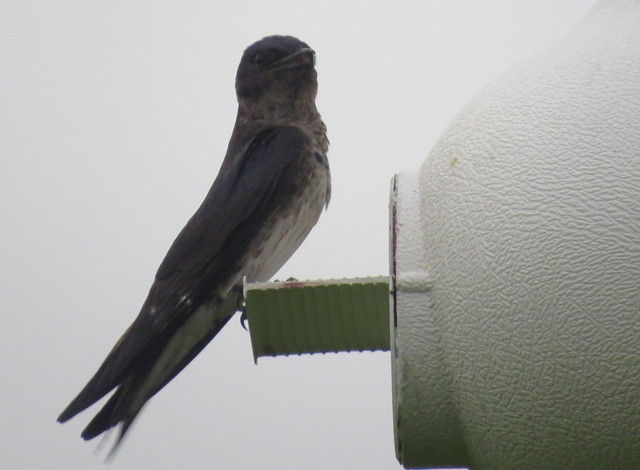
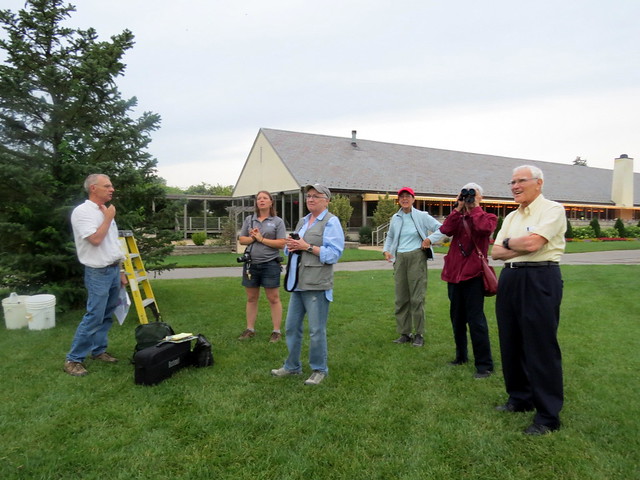
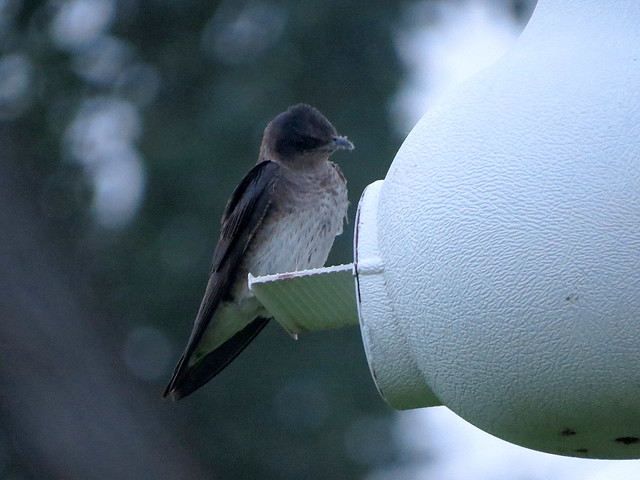
and the lights came up to dispel the growing darkness of dusk,
we bid goodbye to the Purple Martins in the purple twilight,
and went on our way.
I’ve referred to the Purple Martins in other posts,
and

